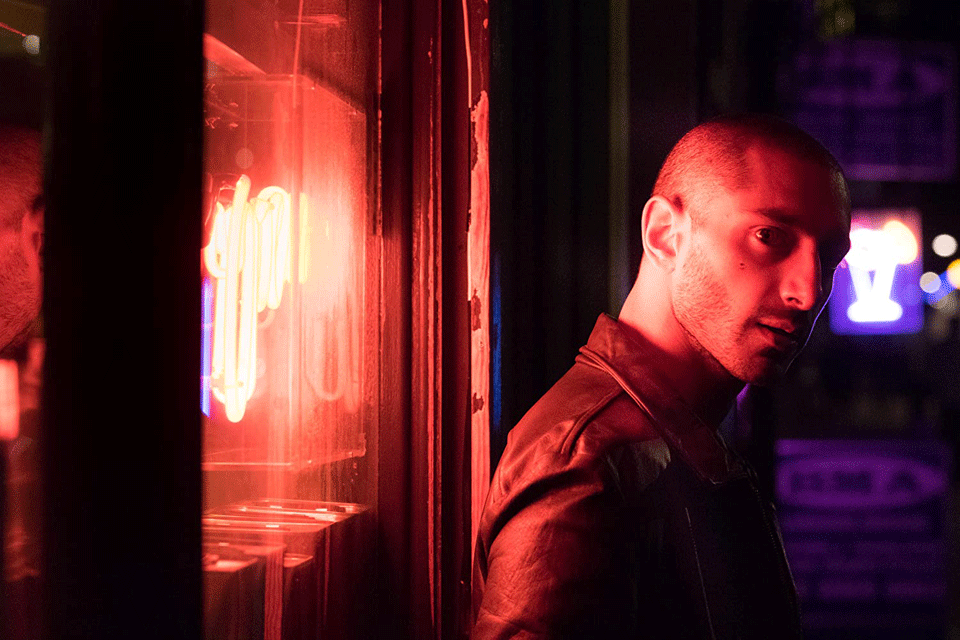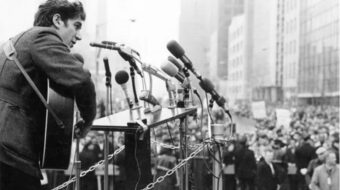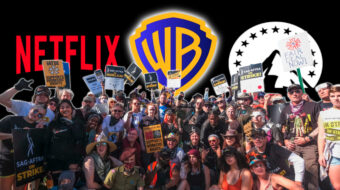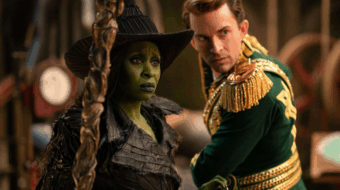
Although the highlight and main attraction of most streaming services is always new series and seasons of Serial TV, they also attract viewers, and more importantly to them, subscribers, by posting high profile films, often with a holiday slant. Netflix premiered Scorsese’s The Irishman at Thanksgiving 2019 in an attempt to have families stay at home and gather around the TV or computer rather than go out to theaters at the opening of the Christmas blockbuster season.
For 4th of July weekend, Disney+ served up an exquisitely well-filmed but troubling version of the mega New York theater hit Hamilton about the country’s founding fathers. For all its gloss, the Disney+ entry took second fiddle to a relatively unknown BBC film which has been hiding on Netflix for a while, the extraordinary detective thriller about the exploitation of urban minority neighborhoods, City of Tiny Lights.
In the latter, Tommy Akbar (Riz Ahmed) is a two-bit Pakistani private detective who knows his mixed Anglo-Middle Eastern London neighborhood like the back of his hand. He is hired by a sex worker to find her co-worker, and thus begins a trail of death and destruction. The trail leads him to the local mullah and a Muslim group patrolling the streets, a real estate developer he grew up with, an ex-lover also from his childhood, an intimidating American agent supposedly searching for “terrorists,” and the area’s local drug dealers, all against the background of an attempt to “modernize” this turf Tommy loves and has inhabited all his life.

The script is by Patrick Neate from his Edgar-nominated novel, which he translates to the screen in a way that is pitch perfect. The direction stresses visually the ways the neon of the contemporary London scene is broken down and refracted rather than centralized, casting its eerie transmuted glow on all the inhabitants, continually washing them in a false light they must live under.
The master text for this genre of political-economic truth-telling couched in the detective thriller or film noir is, of course, Chinatown. City of Tiny Lights has absorbed the lessons of that model, but the sign of that absorption is that it plays them back in non-clichéd ways and tells us something new about the methods employed to “clean” urban neighborhoods of their inhabitants. As with Chinatown, there is also a crossing of the political with the personal in such a manner that each interacts to reinforce the villainy of the other.
It is instructive in bringing to the fore the extraordinary accomplishment of this film to compare it to another film on the same theme which remains at the level of a preachy thesis film, though its heart is in the right place. Motherless Brooklyn attempts valiantly to recount the way Robert Moses negatively transformed the City of New York in the 1950s, leaving many urban areas blighted. The film, though, is a play-by-the-numbers, utterly clichéd, pale imitation of Chinatown, complete with a Moses stand-in as Chinatown villain Noah Cross and a personal “passing” plot which never really registers. Ed Norton’s performance as the Tourette’s-afflicted detective is all actorly ticks rather than the lived-in inhabiting of a role we find with Riz Ahmed. The end result is a film that seems to be more a Hollywood projection of and imposition on a neighborhood and a city than an actual description of a place.
City of Tiny Lights, on the other hand, delights in the sheer breadth of places and people that Tommy encounters, as well as his familiarity with the bodegas, the mosques, the kids on the corner selling what they can, and the memories of his own past in a mixed neighborhood. All this at a time when there is still so much misunderstanding and fear of poorer neighborhoods, which often are tarred with the “terrorist” label or dismissed as unsuitable for habitation in order to be replaced by luxury high rises. In the end, the film sides mightily with the community to be found on these streets, as Tommy, in his dogged pursuit of an inconvenient truth, and in the best noir tradition, helps transform that community into a collective and redeem as a kind of extended family what mainstream media would simply term “denizens of darkness.”
Hamilton and settler colonialism
First, the good news. The 2016 stage version of Lin-Manuel Miranda’s Hamilton is exquisitely transformed into a filmed version of the musical. The alternation between close-up views of the individual actors at key moments in their decision process in committing to the rebellion against the British, medium views of the ensemble that catch the frenetic energy of the song and dance numbers as the young country struggles to be born and to survive, and long shots of the entire stage, which suggest an overview of the moment of the American Revolution and the establishing of federal institutions.

The hip-hop music tends at times to be a bit too flattened out as it accommodates to the Broadway musical idiom. On the other hand, the lyrical mastery of the perpetual rapping expands that limited Broadway vocabulary and opens up the possibilities of not only what but also how much can be said providing a dense layer of non-stop rhyming and energy that reinvigorates a staid musical form.
Miranda as Hamilton, the Caribbean Creole and perpetual inside-outsider, lends a quiet dignity to the role in the last act of the musical detailing the character’s redemption and demise, both of which he makes touching and affecting. Elsewhere Daveed Diggs brings an astounding, pulse-pounding charisma to the role of Thomas Jefferson, which enlivens the second half of the work. The first half is propelled by the seditious struggle of the colonists, but the second half takes on the task of dramatizing Hamilton’s nationalizing of the financial system through the Federal Reserve and the battle over states’ rights, more complex and difficult subjects to make work on the stage. Diggs, so good in a similar vein as the revolutionary energizer of the class struggle aboard the train in Netflix’s current Snowpiercer, is a showstopper who keeps the second half humming.
Now to the problem. The show, in light of the contemporary Black Lives Matter protests, seems trapped in 2016, that is, a relic of Obama-era representation where the best African Americans could hope for was, as the Black actor playing Aaron Burr sings, simply to be present in “The Room Where It Happens.” But that somewhat empty phrase does not imply having any power, just simply being present in the room. It’s, unfortunately, a phrase that points to the vacuousness of Obama-era “change,” which in the end resulted just four years later in African Americans having to take to the streets en masse to demand that they not be shot by the police.
This is not the main problem though. The show employs “whiteface,” that is African-American actors taking the part of what largely at the time were their white masters, particularly in the forms of Washington, Jefferson and Madison, key characters in the show. The prolific and erudite African-American historian Gerald Horne in The Counter-Revolution of 1776 claims that one of the major reasons for the “revolution” that Hamilton is so keen to lionize was for white slaveholders in the colonies to maintain their slaves. He also illustrates how the British—the Crown—effectively mocked in the musical as cowardly and patronizing, had four years before the rebellion and as a way of controlling the colonies, acted to free the slaves in the Americas.
Horne’s contention that this attempt, by Northern transporters of and Southern owners of slaves, to preserve the institution was perhaps the root cause of the American Revolution can be debated. What the book proves, though, beyond a shadow of a doubt, is that the uprising and victory by the settler colonialists, as viewed from the perspective of both African slaves and the Indigenous Native or First Americans, both of which groups when possible fought on the side of the British, perpetuated over 350 years of oppression and inequality for both “despised” entities that are still with us today.
Hamilton is full of nasty asides about Jefferson being a slaveholder and immigrants being the ones who really know how to get the job done. But the main line of the musical is a constant validation of an American project which systematically at its outset and beyond disenfranchised the very African Americans who so cheerfully and energetically lend their voices to revalidating these founding fathers. Thus Washington’s melancholy lament in “One Last Time,” as he prepares to retire to Mount Vernon, leaves out the fact that his luxurious retirement on the plantation is financed by the work of his slaves.
The falsehood of the settler colonial rationale whereby Jefferson—who held over 300 slaves—could maintain that “all men are created equal,” was, as Horne asserts, never sufficiently challenged, and consequently repeated itself in American history. Countless times, the U.S. has thwarted indigenous movements toward independence and autonomy, which admittedly sometimes appear messy, in Korea, Iran and Guatemala in the 1950s, Indonesia and Vietnam in the 1960s, Chile and Nicaragua in the 1970s and ’80s, and today in Iraq, Afghanistan, Palestine, and Venezuela, while fostering death and destruction in Libya and Syria.

Hamilton’s attempt to put one more patch over the myth of American exceptionalism, which sees the country only as a pillar and shining light of freedom, is now, because of the Black Lives Matter movement in the street, fraying at the edges. Hamilton already appears locked in a time capsule, emblematic of an era where simple representation without real change was all that was on offer. It’s not enough to just be present in “The Room Where It Happens,” to be simply a witness to—as the Black playwright August Wilson said about African-American representation—a “white culture” whose thrust is “to deny us our own humanity, our own history and our own need to make our own investigations from the cultural ground on which we stand as Black Americans.”










